

- Freestyle fencing with the historical arsenal
- Swords Usage
- Swords Architecture
- Other Historical Weaponry
- Photo Album
Sword Usage
-
The thickness and profile (width) of the blade are connected to their designed usage. Broad and thin blades were forged for cutting swords, while narrow and thick blades were forged for thrusting swords. Unlike public believe, thrusting swords are thicker than cutting swords. It makes sense when one considers the physics of the actions. In cutting, one would like to reduce the friction generated during penetration and the thinner the blade, the easier to get through. In thrusting, one would like the force to focus on the tip and the stouter the blade, the less force is lost to the lateral vibrations. So it is no surprising anymore that some Chinese Dao are thinner than Chinese Jian for the former were cutting swords. By the same logic, one can understand why would an Italian rapier, a single handed civilian dueling thrusting sword could match a Scottish claymore, a two handed big cutting sword in terms of thickness.
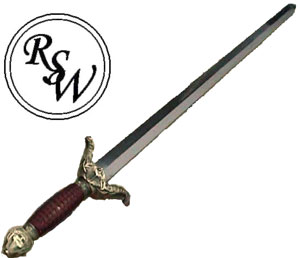
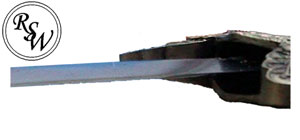
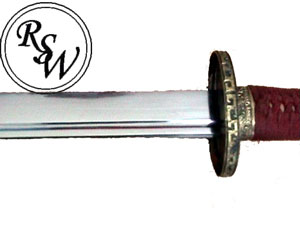
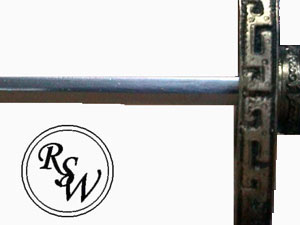
A Chinese Jian is thicker than a Chinese Dao due to the usage difference.

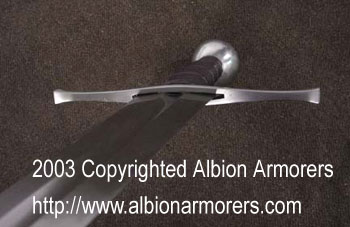 |
|
-
When compare to the European single-handed civilian cut and thrust sword, Chinese Jian were often thicker but narrower. Also, they were often lighter in total weight but with a balance more forward. It was because the hilt portion of Chinese Jian was lighter than the one of cut and thrust sword. Thus by looking at the usage of cut and thrust sword, one can tell that the Chinese Jian were also used in cut and thrust fashion, while emphasizing more on thrusts due to the stout blade and Dian technique due to the more forward balance.
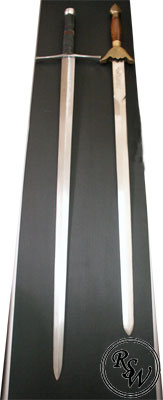
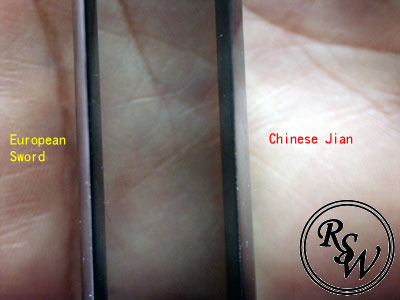
-
Slice and cut are two different things. Slice is done by serration action like a saw removing materials from a piece of wood. Cut is done by penetrating material by splitting them open. The more curve a sword is, the more slicing element it has in action.
-
Among cut, slice and thrust, cut has the most powerful stopping ability because it severs muscle tissues instantly. Thrust comes in second because of the depth of the wound and the amount of pain inflicted. Slice comes in third. However, when dealing with armor, thrust is the best way to penetrate it because of the concentrated pressure at a tiny point. Cut's penetrating power is vastly diminished and only the impact power stays. Hence, armored fighting techniques differ from unarmored fighting techniques with heavier emphasizes on thrusting and grappling.